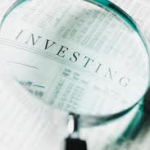 A number of long-short hedge funds are trailing index investing in 2013. Even the largest and historically best performing funds are trailing the S&P 500, a worrying sign for any analyst whose job is to produce alpha.
A number of long-short hedge funds are trailing index investing in 2013. Even the largest and historically best performing funds are trailing the S&P 500, a worrying sign for any analyst whose job is to produce alpha.
In some years, this is pretty easy; in 2011, for instance, the S&P 500 was pretty much flat while the largest equity funds returned between 10% and 30% (you can look at Barron’s list here). This year, at least up to the third quarter, many funds have struggled to yield even 10% to investors at a time when SPY is up over 26%.
There are several reasons why this is happening, but the most important must be the distortionary effects of quantitative easing. The growth of the monetary base and the availability of cheap credit over several years has encouraged stock prices to rise; in 2011, the threat of a debt default and credit rating hindered that rise as investors fled to safely (ironically, in the form of U.S. Treasuries). In 2013 that threat was taken much less seriously, thus allowing stocks to rise higher and higher. Additionally, after seeing two years of decent economic recovery and growth in equities, less money is on the sidelines and more is going into stocks.
In theory, this macro-driven growth is good for macro funds—or at least those that identified the right macro trend to invest in (the macro funds that decided now was a time to buy gold, however, aren’t doing so well). The value investors, on the other hand, are having a harder time of things, as the surge of capital in the general market has caused some tremendous speculative movements in some growth stocks and a general rise across the board as more retail investors turn to index funds to get in the market.
In reality, macro investors are having difficulties because of the odd paradox that QE is inflicting on the market. We saw this play out early this morning. Initially, stocks fell in pre-market and lower as trading began when ADP reported strong job growth. Investors got scared that the Fed would become more hawkish and take away the easy money that has caused stocks to rise. Then that same morning, the Commerce Department reported home sales are better than they have been in 30 years, which made SPY go parabolic briefly. Then investors realized that that too implies the same exact thing: QE’s days are numbered. So stocks went down again, making today a rare good day for the VIX.
This shows that the combination of an economic recovery and quantitative easing is making it very hard to be a macro investor. First, a sign of good news is seen as a bad thing because it signals that the Fed will taper its flood of cheap money into the market. Then, a different sign of good news is seen as a good thing because housing is still the leading indicator of U.S. consumption habits, and the American consumer remains king.
Of course, nothing in the market lasts long, and the paradoxes of the market are likely to vanish once QE is wound down, whenever that may happen. Until then, it’s hard to be a value investor, and it’s doubly hard to be a macro investor.
This is of course bad for professionals and institutional investors, but it’s also great for students. The stock market has never been harder to invest in and understand than it is today, and this generation of finance students will be learning in the most competitive, complex, and intricate market the world has ever known. When the market gets less paradoxical, those students who mastered this market’s many moving parts are destined to offer major returns to their investors.
